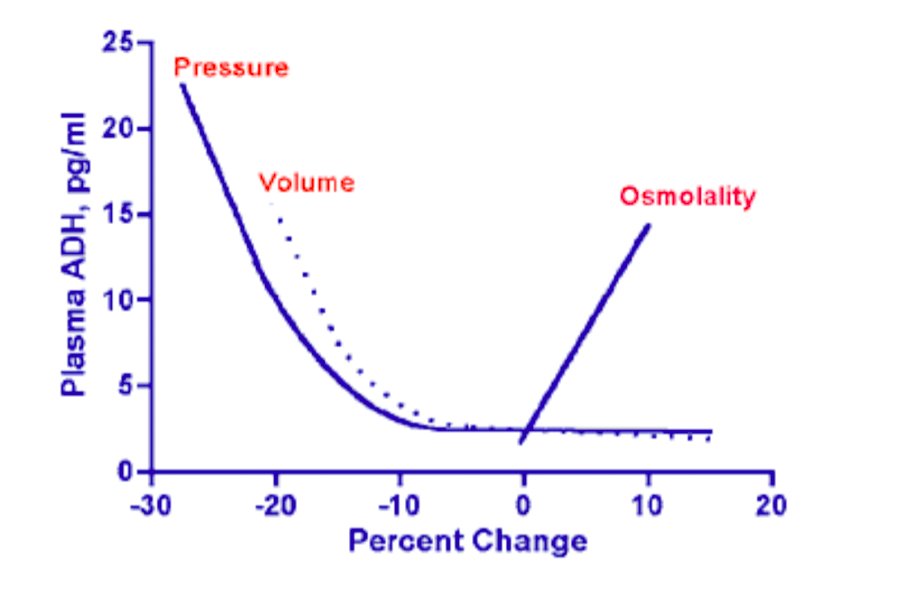Sometimes salt tablets work for hyponatremia and sometimes they don’t. How can you figure out when to use them and when not to?
Hyponatremia is a failure of the regulation of:
so 1 gram is 17 mmol (1 g /58.4 g/mol = 0.017 moles * 1000 mmol/mol)
So 1g tid is 51 mmol of Na and 51 mmol of Cl.
51 is a third of the 154 mmol per liter of 0.9% saline
Increased water intake =>lowers serum osmolality => suppresses ADH => Increases urine output
Decreased water intake => increases serum osmolality => stimulates ADH => decreases urine output
Lots of ADH, means just a little water and concentrated urine
Suppressed ADH means a lot of water and dilute urine
With 600 mOsm consumed the most urine a person could make is:
What’s the max urine output for a patient eating 100 mOsm a day?
All carbohydrates.
No solute.
(please ignore the hgh protein beer in the corner) foodandwine.com/blogs/new-high…
Sodium in = sodium out
1. Tea and Toast syndrome (or its alcoholic uncle: Beer Drinkers Potomania)
2. Volume depletion
3. SIADH
Otherwise, they don’t work and can actually make patients sicker.
/fin









